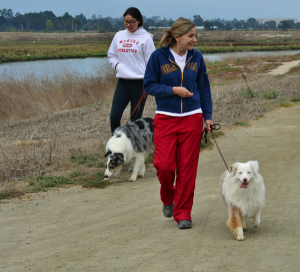I woke up slowly, my groggy mind becoming aware that the irritating noise entering my ears was my radio alarm clock. It was set to NPR and some kind of newscast was on.
What day is it? I wondered, peering over at the offending clock whose digital numbers glowed 6:30 a.m.
Tuesday. It’s only Tuesday.
Sigh.
Tuesday, September 11, 2001.
What? What are they talking about on the news? Oh, it must be some kind of remembrance of the 1993 World Trade Center bombing . . . Wait a minute. Why are they going on about it in those urgent voices?
Suddenly, I sat up in bed. My partner, Ruth, had come to the same conclusion I had at the exact same time. “Something’s going on,” we said in unison. I reached for the television remote and tuned in to NBC.
Katie Couric’s and Matt Lauer’s voices were somber, a sharp contrast to their usual light, cheerful banter. An image of two buildings with smoke coming out of them filled the screen. Ruth and I gaped at the spectacle.
“This is what we know so far,” Katie said, “Both the North Tower and the South Tower of the World Trade Center have been hit by commercial airplanes. Reports indicate it is possible both planes were hijacked. It is possible, but not confirmed, that these are terrorist attacks.”
“Oh my god,” I whispered.
We continued watching and listening as more reports came in. A fire at the Pentagon. No, an explosion. An explosion caused by a plane crash. A few minutes  later, we watched as the South Tower collapsed. Then the North Tower, then reports of a plane going down in Pennsylvania.
later, we watched as the South Tower collapsed. Then the North Tower, then reports of a plane going down in Pennsylvania.
My mind was numb, unable to take in the nightmarish domino effect that was unfolding. Ruth and I mechanically readied ourselves for work, peeking out at the television every so often.
We both worked at the county mental health clinic and there was an all-staff meeting scheduled for the morning. As we entered the large hall, a low, energized buzz emanated from those already in their seats. The director of our agency entered and stepped up to the microphone. She was not an emotional person and I was curious whether she would even mention the New York attacks.
“Good morning,” she began, “We are all very concerned about the events happening in New York. Let us share a moment of silence in honor of those who have lost their lives this morning.”
I felt relieved. It was good to share a short ritual with others who were impacted by the attacks.
After the meeting, I went back to my office where my staff had gathered in the conference room, waiting for me. My voice shook slightly as I spoke, “There is a great tragedy happening in our nation right now. We are going to turn the television on in the conference room here to continue monitoring the events. Given that this is an emotional day for all of us, I want you to make sure that you do whatever you need to do in order to be okay. You have my permission to cancel your appointments and stay here or you can go about your day as scheduled.”
We took each other’s hands and observed another moment of silence. Then, some people left to go back to their daily tasks; following their routine helped them get through the day. Others stayed in the room, tears running down their faces, eyes glued to the television. Being with others was how they chose to work through their shock and grief.
In the days that followed, I allowed myself to weep when needed (which was frequently at first) and, as the days turned into months, I tried to effect change by joining rallies to protest against President Bush’s drive toward war with Iraq.
Time has healed much of my grief for those lost on that horrible day. Yet I still weep when I need to over the loss of our brave soldiers and innocent Iraqi and Afghan civilians.
And I still keep two small rituals I have developed for myself. First, each year on September 11th, no matter how hot, I wear black clothing to remember and mourn the lives lost and the collateral damage done to our nation through war.
Second, the PBS Newshour with Jim Lehrer often ends their program with a “roll call of those lost in the military conflicts in Iran and Afghanistan. Here, in silence, are ____ more names.” As the pictures of soldiers and officers appear on the screen with their names and hometowns, I rise up from my chair and stand to watch, my arms behind my back, hands clasped, as a sign – just for myself – of respect for them and their families.
For those lost on September 11, 2001 and after:
I will never forget.
Takeaway points: The resiliency skills and behaviors in this post are in bold. You might notice themes of shared rituals, allowing emotional reactions, honoring differences in reacting to tragedy, utilizing internal locus of control (trying to effect change), time as a healer, and personal rituals as rememberance.
What are your September 11th resilience stories?








